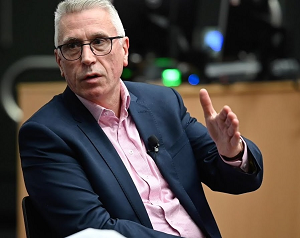
During the Orbis Instructional Leadership program, Bruce Armstrong took a deep dive into neuroscience, exploring the foundations of habit forming. Our South Australian school leaders were challenged to think about their modus operandi, and how their habitual behaviours influenced their leadership. Read on to find out how to create positive habits, and how to bring the tribe with you.
We’re all creatures of habit.
Think about it for a minute…how much of your daily routine do you do on automatic pilot?
Would you have guessed almost half? Recent studies reveal that approximately, “45% of everyday behaviours tend to be repeated in the same location almost every day” (Neal, Quinn & Wood 2006). The axiom ‘we are what we repeatedly do’ comes to mind. It reminds us that habits shape our lives. Psychologist William James put it like this: “All our life, so far as it has definite form, is but a mass of habits - practical, emotional, and intellectual … bearing us irresistibly toward our destiny.”
This understanding of habits resonates with our felt experience of seeking to make personal change. How do you go with resolutions? Whether you’re looking to lose weight, improve your health, read more, binge watch Netflix less or, [you fill in the blank] … do you find yourself in Struggle Street quicker than you imagined?
The path to improvement can be fraught with setbacks even when we’re highly motivated or determined to make a change. Take those whose health issues caused a near death experience. According to the Journal of the American Medical Association (2013), 1 in 4 men don’t make any lifestyle changes after a major cardiac event. This is not to cast judgement - not at all - rather it underscores the challenges and complexities of behavioural change.
Clearly will power and self-control isn’t enough (Wood 2019). Neuroscientists have now made it clear that what’s at play here is the brain and its need to develop neural pathways by habits. The longer you perform a particular behaviour, the deeper the neural pathways get etched. The problem is, we often tire of the effort before we get the new behaviour to stick.
These insights challenge us as leaders to attend deeply to the human dimensions of change. For some reason we tend to have a more sympathetic view of the personal challenges associated with our own improvement and not necessarily translate this into our leadership of organisational change. We often expect changes in teacher practice to occur through rational explanation, an articulation of the evidence or an appeal to what is in the students’ best interests. All of these things are necessary but won’t affect change unless we also attend to the impediments to change that have built up over time through the routine practices (habits) of individual staff and school culture.
Brain science - habit forming - provides a key to the all-important ‘how’.
In his book, Atomic Habits, James Clear provides 4 steps for using brain science, this habit-forming insight, to advantage. It involves recognising ‘cue, craving, response and reward’. If we want to form new habits, he says, we should make them obvious, attractive, easy and satisfying.
Leading change in our schools therefore involves the need to find ways to make the desired behaviours obvious. For example, posters cuing classroom behaviours, Blooms or SOLO taxonomy can be posted to prompt outcomes. Praise of positive culture achieves the same because, as Clear points out, “we have a strong desire to fit in and belong to the tribe.”
One of the best ways I’ve found to build a new habit is to identify a current habit and stack a new one on top. It’s called ‘habit stacking’. All teachers ask students questions (existing habit) so let’s say you want teachers to improve the quality of the responses from students … you could introduce the concept and practice of ‘wait time’ (new habit), cued by having a student acting as time keeper or using different calling strategies other than ‘hands up’ (existing habit), with the random drawing of names from a jar (new habit). Try thinking about those things you do effortlessly each day, like marking the roll, asking questions, then stack a new habit on top.
It helps to know that time matters when strengthening habits; that different timeframes can be required by individuals within a cohort. Wendy Wood points out that, “it can take 2 to 3 months to form a simple habit – to make it so automated that you don’t have to think about it.” So, yes, change requires patience, but encouraging each other to stick to the habit, acknowledging and celebrating even the smallest increments of success pays off. The reward will come. Just ask the athlete who completes their first marathon, the teacher who enjoys that ‘penny dropping’ moment with a student, or the principal team that sees the benchmarks they set exceeded.
And let’s take a moment to thank Neuroscientists! Never underestimate the power of psychological research into human change to reach into and powerfully impact school improvement.
Bruce Armstrong
Director, Chapter Three
Former Deputy Secretary, Schools and Regional Services Group, DET
References
Clear, J. (2018). Atomic Habits An Easy and Proven Way to Build Good Habits and Break Old Ones. Avery, Penguin Random House, New York.
Evans, R. (1996). The Human Side of School Change Reform, Resistance, and the Real Life Problems of Innovation. Jossey-Bass, San Francisco
James W. (1914). Habit. H. Holt & Co, New York.
Neal, D.T, Wood W, Quinn JM. Habits—A Repeat Performance. Current Directions in Psychological Science. 2006;15(4):198-202. doi:10.1111/j.1467-8721.2006.00435.x
Robinson, V. (2018) Reduce Change to Increase Improvement. Corwin California
Teo, K., et al. (2013). Prevalence of a healthy lifestyle among individuals with cardiovascular disease in high-, middle- and low-income countries. Journal of the American Medical Association, 309(15), 1613-1621.
Wood, W. (2019). Good Habits, Bad Habits: The Science of Making Positive Changes That Stick. Farrar, Strauss, Giroux, New York.